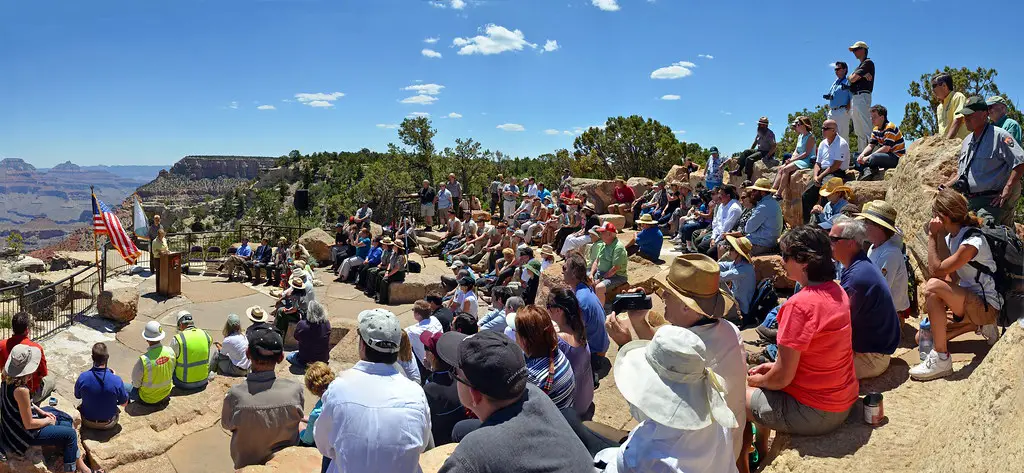For decades, Florida has reigned as a top destination for retirees seeking warm weather, sunshine, and a relaxed lifestyle. However, the demographic landscape is shifting, and Arizona is increasingly emerging as a strong contender, attracting a significant influx of retirees. This westward migration is driven by a variety of factors, leading to distinct differences in the retirement experience offered by these two popular states. Understanding these nuances is crucial for anyone considering where to spend their golden years.
1. Cost of Living

One of the most significant differences between Arizona and Florida lies in the overall cost of living. As noted by FinanceBuzz, while both states offer relatively affordable living compared to some other parts of the U.S., Arizona generally boasts a lower cost of housing, particularly outside of the major metropolitan areas like Phoenix and Tucson. This can be a major draw for retirees on a fixed income seeking to stretch their retirement savings further.
Florida, while having no state income tax which can be appealing, often has higher costs associated with housing, especially in the popular coastal regions. Property taxes and homeowners insurance can also be significant expenses in Florida, particularly with increasing concerns about hurricanes and rising insurance rates. Arizona’s more moderate housing costs can make it a more financially attractive option for many retirees.
2. Housing Options

The types of housing options available and their associated costs also differ between the two states. Florida offers a wide range of retirement communities, often with resort-style amenities and a focus on active adult living. According to a report by RetireNet, these communities can be attractive but sometimes come with higher monthly fees and assessments. Waterfront properties are also a significant draw in Florida, but they often command a premium price.
Arizona, on the other hand, offers a diverse range of housing, from age-restricted communities to more integrated neighborhoods. While waterfront property exists, it is less prevalent and often more expensive than in Florida. Arizona’s appeal often lies in its access to mountain views, desert landscapes, and a different style of architecture that blends with the natural environment.
3. Climate and Environment

The climate and natural environment are distinctly different and play a significant role in retirees’ choices. Florida is known for its humid subtropical climate with hot summers and mild winters, attracting those who enjoy warm weather year-round and proximity to beaches. As highlighted by the National Oceanic and Atmospheric Administration (NOAA), Florida is also susceptible to hurricanes and tropical storms, which can impact insurance costs and lifestyle.
Arizona offers a more arid climate with hot, dry summers and mild winters, particularly in the southern part of the state popular with retirees. The lower humidity can be a significant draw for those with respiratory issues or who prefer a drier heat. Arizona’s landscape is characterized by deserts, canyons, and mountains, offering different outdoor recreational opportunities.
4. Outdoor Activities

The outdoor recreational opportunities available in Arizona and Florida cater to different interests. Florida is renowned for its beaches, boating, fishing, and golf courses, attracting those who enjoy water-based activities and a coastal lifestyle. According to the Florida Fish and Wildlife Conservation Commission, the state offers extensive opportunities for saltwater and freshwater fishing.
Arizona’s outdoor activities are centered around its unique desert and mountain landscapes, offering hiking, rock climbing, mountain biking, and exploring national parks like the Grand Canyon. The Arizona Game and Fish Department highlights the state’s diverse wildlife and opportunities for hiking and wildlife viewing. The two states offer distinct but equally appealing outdoor experiences.
5. Healthcare Access

Access to quality healthcare is a critical consideration for retirees. Both Florida and Arizona have a significant number of healthcare facilities and a large population of seniors, leading to a well-established healthcare infrastructure. The quality and specialization of medical services are generally comparable in major metropolitan areas of both states.
However, the distribution of healthcare facilities might differ in more rural areas of each state. Retirees considering smaller towns or more remote locations should research the availability of medical services in those specific areas of both Arizona and Florida.
6. Cultural Attractions

The cultural attractions and lifestyle also present differences. Florida boasts a vibrant arts and culture scene, particularly in its larger cities and coastal areas, with numerous museums, theaters, and entertainment venues. Its proximity to the Caribbean also influences its cultural flavor.
Arizona’s cultural scene is influenced by its Native American heritage and its Southwestern location, offering unique art galleries, museums focused on indigenous cultures, and a distinct culinary tradition. The landscape itself often plays a central role in Arizona’s cultural identity.
7. Political Landscape

The political landscape of a state can be a factor for some retirees. Florida has historically been considered a swing state, while Arizona has leaned more conservative in recent decades, although its political demographics are also evolving. Retirees may find the prevailing political climate of a state more or less aligned with their own views.
Understanding the general political leanings and the types of policies enacted in each state can be a part of the decision-making process for some individuals choosing a retirement location.
8. Proximity to Family

Proximity to family and existing social networks can be a significant factor in retirement location decisions. The migration patterns of previous generations may mean that retirees have family members concentrated in certain areas. Considering the location of children and grandchildren can influence whether Arizona or Florida is a more appealing choice.
Changes in family locations over time can also shift the balance of appeal between the two states for some retirees.
9. Transportation and Accessibility

Transportation options and the ease of getting around can also differ. Florida has a more extensive network of highways and airports, facilitating travel both within the state and to other parts of the country and internationally. Public transportation options vary by city.
Arizona’s transportation network is also well-developed, particularly in the major metropolitan areas, but the distances between cities can be greater. Airport access is generally good in larger cities.
10. Community and Social Opportunities

Both states offer numerous opportunities for retirees to engage in community activities and social interactions through clubs, organizations, and volunteer work. The specific types of communities and social opportunities available may reflect the different lifestyles and interests prevalent in each state.
Retirement communities in Florida often have a strong focus on social activities and amenities tailored to active seniors. Arizona also offers many such communities, along with opportunities to connect with others who share interests in outdoor activities or Southwestern culture.
11. Part-Time Work Opportunities

For retirees seeking part-time work to supplement their income or stay active, the job markets in Arizona and Florida may present different opportunities. Florida’s tourism and hospitality industries often provide numerous part-time roles.
Arizona’s growing economy in sectors like healthcare, technology, and tourism may offer a different mix of part-time employment options for retirees.
12. Tax Benefits

While Florida has the advantage of no state income tax, Arizona offers other potential tax benefits for retirees, such as exemptions on Social Security income and some retirement income. The overall tax burden can vary depending on an individual’s specific financial situation.
Retirees should carefully consider the specific tax laws of each state and how they might impact their retirement income and expenses.
13. The Evolving Demographics

The increasing popularity of Arizona as a retirement destination is changing its demographic makeup. While Florida still has a larger overall retiree population, the growth rate of the senior population in Arizona has been significant in recent years. This shift can influence the types of services, amenities, and communities that develop in each state.
As more retirees choose Arizona, the state is adapting to meet their needs, leading to new developments and a growing focus on senior living and healthcare. This evolving demographic landscape suggests that Arizona will continue to be a strong contender as a retirement destination for the foreseeable future.
